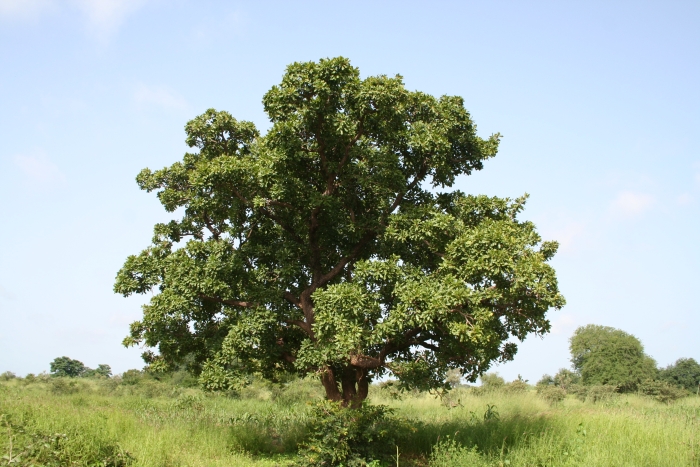Shea Tree
(Vitellaria paradoxa)
Shea Tree (Vitellaria paradoxa)
/
/

Marco Schmidt[1]
CC BY-SA 3.0
Image By:
Marco Schmidt[1]
Recorded By:
Copyright:
CC BY-SA 3.0
Copyright Notice:
Photo by: Marco Schmidt[1] | License Type: CC BY-SA 3.0 | License URL: https://creativecommons.org/licenses/by-sa/3.0 | Uploader: Marco Schmidt | Publisher: Wikimedia Commons | Title: Vitellaria_paradoxa_MS_6563.JPG | Notes: {{Information |Description=''[[Vitis arizonica]]'' near Crystal Spring, [[Ash Meadows]], southern Nevada |Source=self-made |Date=2007-04-04 |Author= [[User:Stan Shebs|Stan Shebs]] |Permission=see below |other_versions= }} {{Stan Shebs photo}} [[Catego


























Estimated Native Range
Summary
Vitellaria paradoxa, commonly known as Shea Tree, is a deciduous tree native to the dry savannah belt of West and Central Africa. It thrives in a variety of habitats including wooded savannahs, dry deciduous forests, and gallery forests. This species is well-adapted to the ecological conditions of the Sudano-Sahelian zone. Typically, the Shea Tree reaches 7–15 m (23–49 ft) in height with a trunk diameter up to 2 m (6.5 ft), featuring a thick, corky bark that helps protect it from fires. The tree is notable for its elongated fruits that resemble large plums, 4 to 8 centimeters long, each containing a nut rich in oil. Shea butter, a valuable commodity, is extracted from these seeds. The tree’s yellow and cream flowers bloom in the summer and are modest in appearance.
The Shea Tree is valued for its economic importance and the nutritious pulp of its fruit. It is not commonly cultivated in gardens due to its slow growth and large size, but it is an important agroforestry species in its native range. The tree begins to bear fruit at 10 to 15 years of age, reaching full production at 20 to 30 years, and can continue producing nuts for up to 200 years. In cultivation, it requires full sun exposure and can tolerate a range of water conditions, from low to medium. It is adaptable to various soil types with different drainage speeds. However, the tree is not typically grown outside its native range due to its specific ecological role and the difficulty of replicating its native habitat conditions.CC BY-SA 4.0
The Shea Tree is valued for its economic importance and the nutritious pulp of its fruit. It is not commonly cultivated in gardens due to its slow growth and large size, but it is an important agroforestry species in its native range. The tree begins to bear fruit at 10 to 15 years of age, reaching full production at 20 to 30 years, and can continue producing nuts for up to 200 years. In cultivation, it requires full sun exposure and can tolerate a range of water conditions, from low to medium. It is adaptable to various soil types with different drainage speeds. However, the tree is not typically grown outside its native range due to its specific ecological role and the difficulty of replicating its native habitat conditions.CC BY-SA 4.0
Plant Description
- Plant Type: Tree
- Height: 40-60 feet
- Width: 30-50 feet
- Growth Rate: Slow
- Flower Color: Yellow, Cream
- Flowering Season: Summer
- Leaf Retention: Deciduous
Growth Requirements
- Sun: Full Sun
- Water: Low, Medium
- Drainage: Slow, Medium, Fast
Common Uses
Edible*Disclaimer: Easyscape's listed plant edibility is for informational use. Always verify the safety and proper identification of any plant before consumption., Low Maintenance
Natural Habitat
Wooded savannahs, dry deciduous forests, and gallery forests within the Sudano-Sahelian zone of West and Central Africa
Other Names
Common Names: Shea Butter, Bambouk-Buttertree, Shea, Shi Tree, Shea-Buttertree, Sheatree, Vitellaria, Karite-Nut, Galam-Buttertree, Schibutterbaum
Scientific Names: , Vitellaria paradoxa, Butyrospermum paradoxum, Lucuma paradoxa,
GBIF Accepted Name: Vitellaria paradoxa C.F.Gaertn.